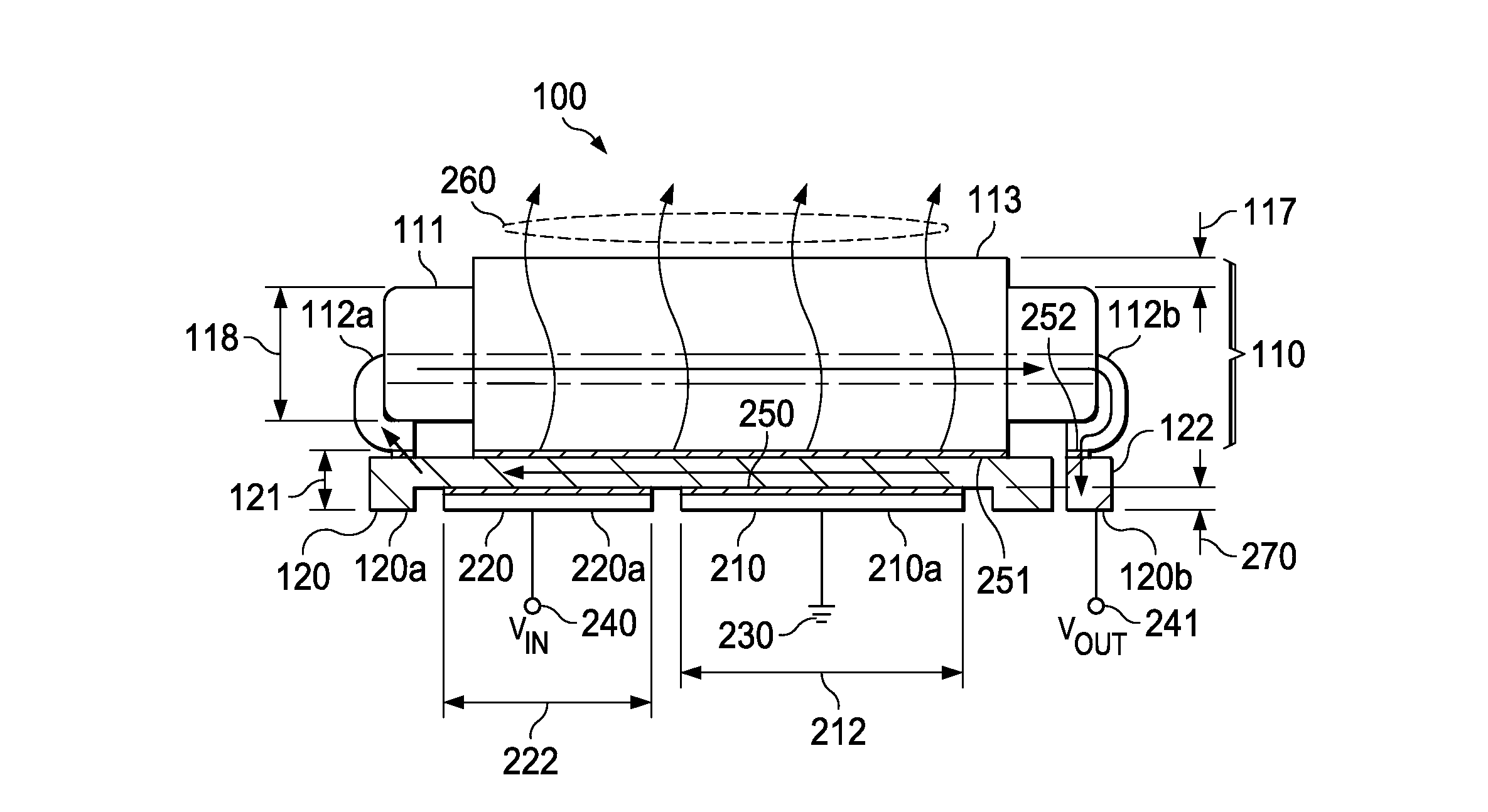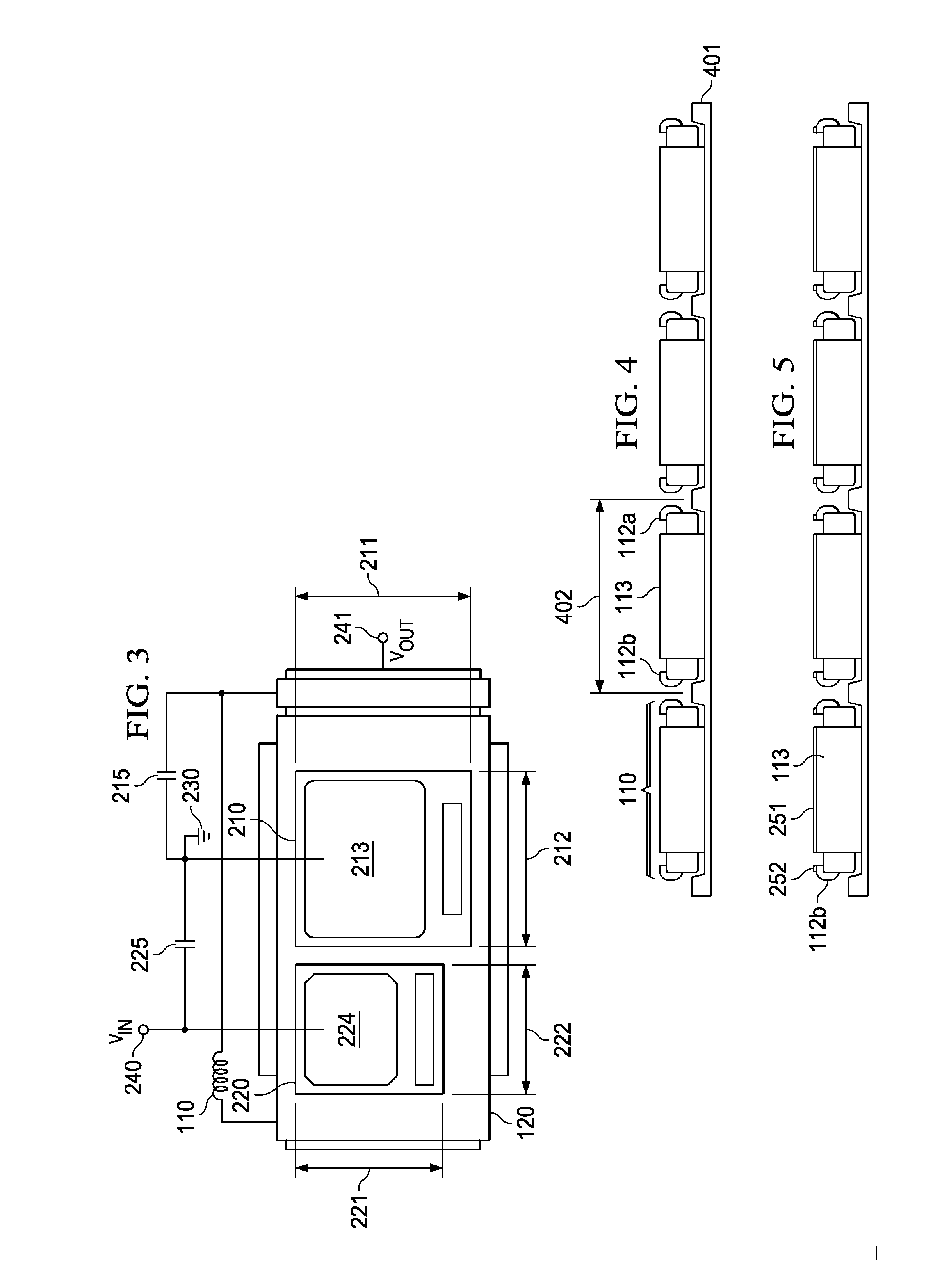DC-DC Converter Vertically Integrated with Load Inductor Structured as Heat Sink
a load inductor and vertical integration technology, applied in the direction of heat transfer modification, magnetic bodies, instruments, etc., can solve the problems of reducing the efficiency of the converter, reducing the integration of the inductor with the fets, and reducing the pcb area required for assembly and associated parasitic losses, so as to reduce the pbc area required for assembly and the associated parasitic losses, enhancing the converter efficiency, and reducing parasitic resistance and inductan
- Summary
- Abstract
- Description
- Claims
- Application Information
AI Technical Summary
Benefits of technology
Problems solved by technology
Method used
Image
Examples
Embodiment Construction
[0022]FIG. 1 shows a perspective top view of an exemplary finished power converter, generally designated 100, with the load inductor 110 vertically integrated with conductive carrier 120, acting as the switch node of the field effect transistors (FETs) (not visible in FIG. 1) of a half-bridge, or synchronous Buck converter. The visibly dominating features of load inductor 110 include housing 111, the leads 112a and 112b to the metal coil inside the ferrite, and the metal sleeve 113 wrapped around the length of the housing. Lead 112b is attached to output terminal 122, which is separated from carrier 120 but made from the same metal sheet (see FIG. 6).
[0023]Generally, an inductor such as load inductor 110 includes inside a spirally configured coil of coated metal wire, preferably copper, welded to a plated leadframe, also preferably copper, and molded into a magnetic ferrite material, often called ferrimagnetic in short. The ferrite material is pressed at high pressure, cured, and en...
PUM
| Property | Measurement | Unit |
|---|---|---|
| height | aaaaa | aaaaa |
| height | aaaaa | aaaaa |
| side length | aaaaa | aaaaa |
Abstract
Description
Claims
Application Information
 Login to View More
Login to View More - R&D
- Intellectual Property
- Life Sciences
- Materials
- Tech Scout
- Unparalleled Data Quality
- Higher Quality Content
- 60% Fewer Hallucinations
Browse by: Latest US Patents, China's latest patents, Technical Efficacy Thesaurus, Application Domain, Technology Topic, Popular Technical Reports.
© 2025 PatSnap. All rights reserved.Legal|Privacy policy|Modern Slavery Act Transparency Statement|Sitemap|About US| Contact US: help@patsnap.com



